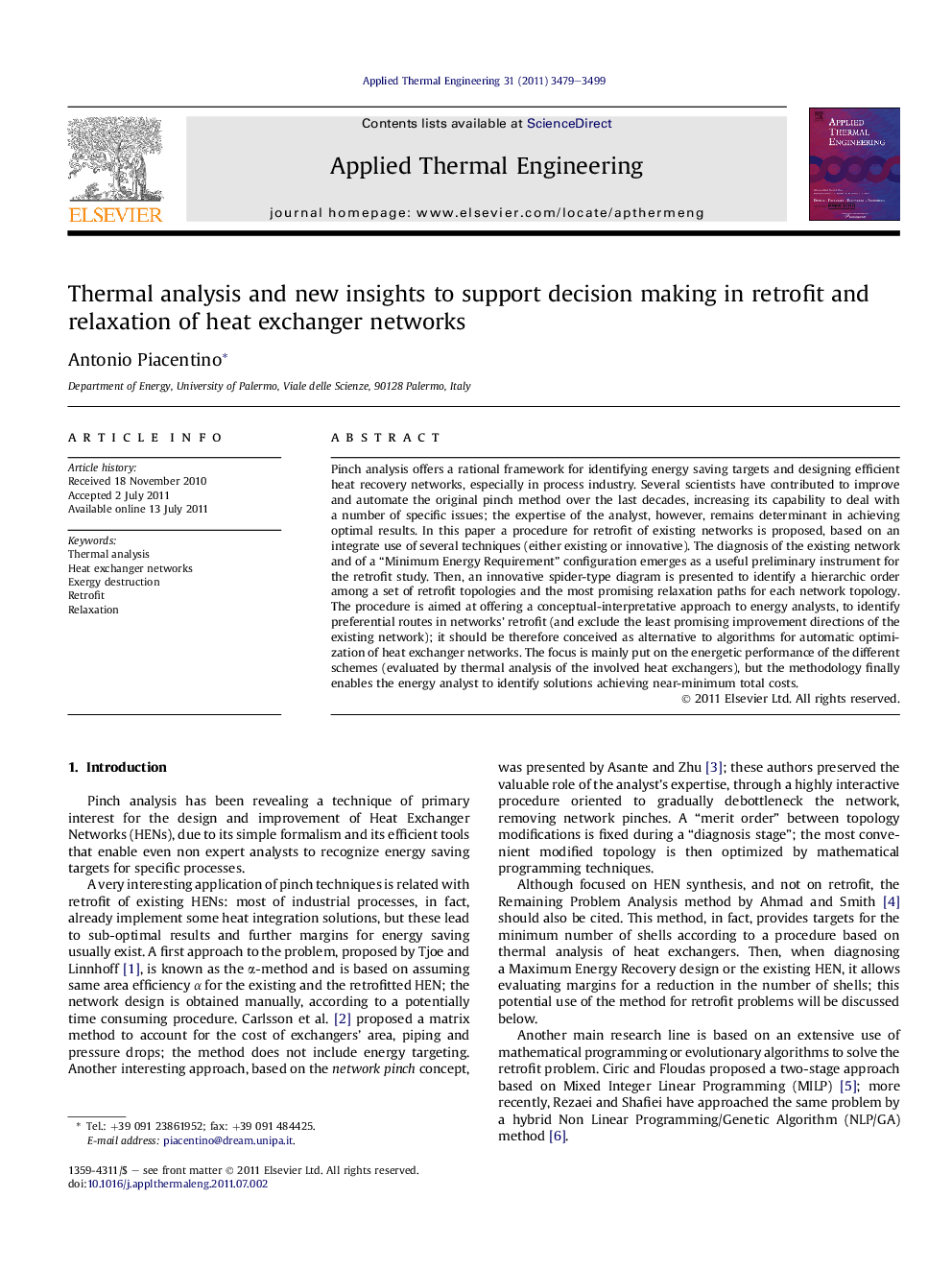| Article ID | Journal | Published Year | Pages | File Type |
|---|---|---|---|---|
| 647687 | Applied Thermal Engineering | 2011 | 21 Pages |
Pinch analysis offers a rational framework for identifying energy saving targets and designing efficient heat recovery networks, especially in process industry. Several scientists have contributed to improve and automate the original pinch method over the last decades, increasing its capability to deal with a number of specific issues; the expertise of the analyst, however, remains determinant in achieving optimal results. In this paper a procedure for retrofit of existing networks is proposed, based on an integrate use of several techniques (either existing or innovative). The diagnosis of the existing network and of a “Minimum Energy Requirement” configuration emerges as a useful preliminary instrument for the retrofit study. Then, an innovative spider-type diagram is presented to identify a hierarchic order among a set of retrofit topologies and the most promising relaxation paths for each network topology. The procedure is aimed at offering a conceptual-interpretative approach to energy analysts, to identify preferential routes in networks’ retrofit (and exclude the least promising improvement directions of the existing network); it should be therefore conceived as alternative to algorithms for automatic optimization of heat exchanger networks. The focus is mainly put on the energetic performance of the different schemes (evaluated by thermal analysis of the involved heat exchangers), but the methodology finally enables the energy analyst to identify solutions achieving near-minimum total costs.
► A procedure for retrofit and relaxation of existing HENs is presented. ► The existing HEN and a MER design are preliminarily diagnosed to assess targets. ► Innovative diagrams and indicators are used to identify improvement directions. ► Energy targets, heat transfer area and number of shells are simultaneously examined. ► Relaxation paths should be pursued at a limited extent, to minimize total costs.
